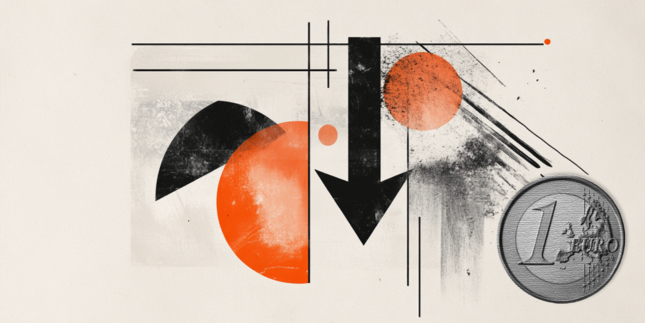The costly and deadly African swine fever is penalizing food security in China and more than half a dozen Asian countries. Despite the official ASF story, the virus has been used as a bio-weapon in the past. The suppression of such bio-threats requires multipolar cooperation.
On August 20, Agriculture Secretary William Dar confirmed the BAI report on the growing death rate of pigs raised by farmers in their backyards. The Philippines is tightening bio-security awaiting lab results.
Along with Myanmar, Philippines may prove the most recent target of the Asian swine fever (ASF). The virus is already present in six Asian countries: Cambodia, China, DPR Korea, Lao PDR, Mongolia and Vietnam. Current losses represent more than 10% of the total pig population in China, Vietnam and Mongolia, respectively.
But how did the African swine fever (ASF) outbreak start?
The official ASF narrative
The ASF is a devastating hemorrhagic fever of pigs with mortality rates close to 100 percent. It causes major economic losses, threatens food security and limits pig production in affected countries. There is no vaccine against the virus. It persistently infects its natural hosts, warthogs, bush pigs, and soft ticks, which likely act as a vector with no disease signs.
Historically, the first African swine fever outbreak took place in Kenya in 1907. The first spread of ASF outside Africa was to Portugal in 1957, presumably as a result of waste from airline flights being fed to pigs near Lisbon airport. Outbreaks of ASF were reported subsequently in other European countries.
Cuba was the first country in the Caribbean region to report infection with ASF in 1971. It was believed to have been introduced from Spain. ASF was further reported in the late 1970s in several Caribbean island countries and in Brazil 1978. Presumably, it was introduced from Spain or Portugal through food waste carried by transcontinental flights.
After a decade or more relative quiet, the ASF in 2007 spread to Georgia in the Caucasus and thereafter widely to neighboring countries, including Armenia, Azerbaijan and several territories in Russia. After another decade of quiet, the number of ASF outbreaks suddenly soared after September 2018, especially in China, although it had not been detected in China or Asia before. Since then, over 2.8 million hogs have been culled globally due to ASF, although according to the World Organization for Animal Health (OIE). Industry observers believe the actual number is much higher.
That’s the conventional wisdom, which implies that ASF remained restricted to Africa until the late ‘50s. In reality, ASF had arrived in North America already in the early 1950s, when Fort Terry, a US biowarfare facility in Plum Island New York, housed seven deadly virus strains.
ASF in biological warfare
After World War II experimentation, U.S. biological warfare was launched for offensive purposes. During the Cold War, ASF attracted great interest among anti-animal viruses, such as foot and mouth disease and cattle plague. By 1954, according to biowarfare historians, three viruses were available as agents for the destruction of food-bearing animals, including ASF.
Between the mid-1960s and late ‘90s, Cuba accused the United States of 10 biological warfare attacks following serious infectious disease outbreaks. None were proven conclusively, but several probably occurred. In 1971, pigs in Havana hog farm were diagnosed with ASF virus, which spread and caused half a million pigs to be slaughtered. Cuba suffered food shortage. The UN labeled the outbreak the "most alarming event" of 1971.
In 1977, the investigative journalists of Newsday, a Long Island daily, reported the virus was delivered from a US army base in the Panama Canal Zone; the site of joint Army-CIA covert operations in Latin America and the Caribbean.
Reportedly, anti-Castro saboteurs, backed by the CIA, had introduced ASF into Cuba six weeks before the outbreak to destabilize the economy. US Army denied involvement. Nevertheless, Norman Covert, historian of Fort Detrick, Maryland – the center of US biowarfare from the mid-50s to late ‘60s - has said that CIA had access to these laboratories. Later, a CIA document confirmed that biological warfare was used in efforts to destabilize Cuba.
Such efforts did not end with the Cold War. In 2000, neoconservatives behind the Bush administration flirted with the idea of “politically useful” ethnic bioweapons. That led Russia in 2007 to ban all exports of human bio samples.
In October 2018, Russian Defense Ministry claimed that the spread of viral diseases from Georgia, including African swine fever since 2007, could be connected to a US lab network. In the area, more than 70 Georgians had died in mysterious conditions, which Moscow attributed to US toxins or bioweapons. Russia believed bio agents violated the prohibition of biological weapons.
The lab network is part of the Cooperative Biological Engagement Program (CBEP), which is funded by Pentagon’s Cooperative Threat Reduction Agency (DTRA). The CBEP labs are located in 25 countries, particularly in Eastern Europe, and the Middle East, Africa and Southeast Asia, including Philippines.
As Pentagon denied that US was developing biological weapons in the labs, Vladimir Shamanov, head of Russia’s State Duma Defense Committee, called for a “comprehensive evaluation” suggesting “joint inspections.” Yet, these multilateral demands have been ignored.
In its 2020 multimillion-dollar budget, the DTRA characterizes the program in Asia by its biosecurity functions, but also as “the partner of choice in a region competing against Chinese influence.” So while virus outbreaks operate across borders, multilateral cooperation is shunned for geopolitics.
How did ASF spread in China and Asia
Some speculate that secrecy and misguided incentives might have fueled the crisis in China. But possible reasons for the accelerated ASF spread do not explain its source, timing or strain.
In August 2018, the first ASF outbreak was reported in Shenyang, northeast China. The ASF viral sequence in China seems to be highly homologous to that of the Georgia 2007 strain. So it is speculated that ASF came to China via Russia or Eastern Europe – from the areas that remain the crux of the US-Russian biowarfare debate.
What is certain is that the ASF is a major threat to Chinese and Asian biosafety. China has the largest swine population in the world, with 690 million pigs in 2017. That’s almost half of the world’s pork production. Already nearly 5 million pigs in Asia have died or been culled because of the spread of ASF.
In addition to the geographic source of the virus, the timing is intriguing. In China, the ASF spread began in parallel with the US trade war after mid-2018. As a result, US pork sales to China were over three times pricier last spring than during the same period a year before, despite the US retaliatory tariffs.
There is still another odd anomaly. In a new study, Chinese medical researchers identified the ASFV strain but conclude that it differs from reported ASF virus strains in China in 2018.
The way to resolve the ASF oddities, including the spread of information and disinformation, is to build on international multipolar biological arms control; that is, the 1925 Geneva Protocol, the 1972 Biological and Toxin Weapons Convention (BWC) and the 1993 Chemical Weapons Convention (CWC). But that would require multilateralism, which the Trump administration abhors.
The economic costs and existential risks associated with biological threats should outweigh the current mistrust among major powers.
This commentary is based on Dr Steinbock’s fully-referenced research note on the African swine fever outbreaks worldwide.
Dr. Dan Steinbock is the founder of Difference Group and has served at the India, China and America Institute (US), Shanghai Institute for International Studies (China) and the EU Center (Singapore).
Difference Group provides multipolar advisory services globally. We serve as trusted advisor to multinational companies, financial institutions, government agencies and municipalities, marketers and international multilateral organizations.
Recommended Content
Editors’ Picks

Gold falls amid a possible de-escalation of US-China tensions Premium
Gold pulled back from its all-time high of $3,500 per troy ounce reached earlier on Tuesday, as a resurgent US Dollar and signs of easing tensions in the US–China trade dispute appeared to draw sellers back into the market.

EUR/USD retreats to daily lows near 1.1440
EUR/USD loses the grip and retreats to the 1.1440 zone as the Greenback’s rebound now gathers extra steam, particulalry after some positive headlines pointing to mitigating trade concerns on the US-China front on Tuesday.

GBP/USD deflates to weekly lows near 1.3350
GBP/USD loses further momentum and recedes to the 1.3350 zone on Tuesday, or two-day troughs, all in response to the frmer tone in the US Dollar and encouraging news from the US-China trade scenario.

3% of Bitcoin supply in control of firms with BTC on balance sheets: The good, bad and ugly
Bitcoin disappointed traders with lackluster performance in 2025, hitting the $100,000 milestone and consolidating under the milestone thereafter. Bitcoin rallied past $88,000 early on Monday, the dominant token eyes the $90,000 level.

Five fundamentals for the week: Traders confront the trade war, important surveys, key Fed speech Premium
Will the US strike a trade deal with Japan? That would be positive progress. However, recent developments are not that positive, and there's only one certainty: headlines will dominate markets. Fresh US economic data is also of interest.

The Best brokers to trade EUR/USD
SPONSORED Discover the top brokers for trading EUR/USD in 2025. Our list features brokers with competitive spreads, fast execution, and powerful platforms. Whether you're a beginner or an expert, find the right partner to navigate the dynamic Forex market.